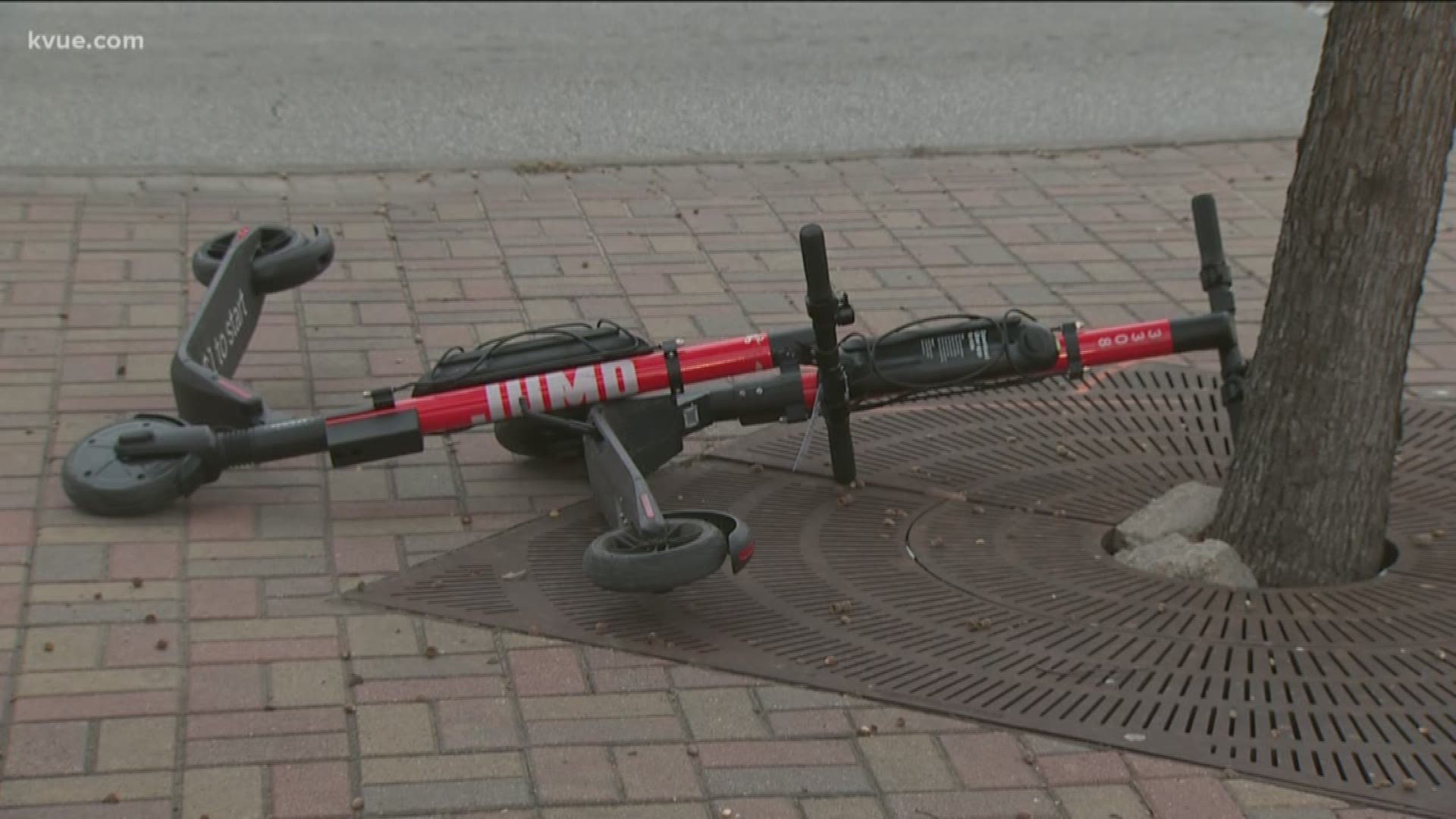AUSTIN, Texas — Austin Public Health and the CDC released a study outlining scooter-related injuries in Austin between the months of September and November of last year.
The study came out Wednesday.
It found that from Sept. 5 to Nov. 30, a total of 271 people were identified to have had potential scooter-related injuries. Of those, 160 were confirmed cases, 32 were probable cases, 46 were suspect cases and 32 were not cases. For one person, the specific vehicle was unknown.
The study defines those cases as follows:
"1. Confirmed: injury related to a rentable dockless electric scooter (e-scooter).
2. Probable: injury related to an electric scooter, not otherwise specified as rentable or dockless.
3. Suspect: information not sufficient to determine if an injury was related to a rental dockless, electric scooter or an electric scooter.
4. Not a case: information sufficient to classify that an injury was NOT related to rentable dockless electric scooter, or the incident occurred outside the City of Austin, or occurred outside the study period."
The report combined the number of confirmed cases (160) and probable (32) to come up with the number 192. Of those individuals, 190 were riding the scooter at the time of their injury and two were non-riders (one pedestrian and one bicyclist).
In a press conference on Thursday, the city officials said there's a .02% crash rate with scooters. They also mentioned 39% of the injuries took place between 6 p.m. and 6 a.m.
“There were more in the street than there were on the sidewalk, think what they were on the hike-and-bike trail," said Jeff Taylor, with Austin Public Health. "But a wide variety of surfaces, they weren’t all on the street, they weren’t all on the sidewalk, some were in parking lots, some were in garages.”
This is believed to be the first study to conduct interviews with injured riders.
“The information we were wanting we could only get from interviewing the person who was riding the scooter," said Taylor. "We wouldn’t know if they were drinking alcohol. We wouldn’t know if it was the first time they were on a scooter.”
RELATED:
Only 125 out of the 190 riders were interviewed. They are described below:
- 55% male
- 9 to 79 years old
- 48% were aged 18-29
- 65% were white
- 22% were Hispanic/Latino
- 60% resided in Austin at the time of their injury
- 22 riders resided in other Texas cities
- 37 were from 22 other states
- Two were from international countries
- One rider's residence was unknown
- 33% of riders were injured during their first scooter ride
- 38% said they would use a scooter again
- 183 said they were alone on the scooter at the time of incident
Their injuries are described as follows:
- 48% had head injuries
- 70% had upper limb injuries
- 55% had lower limb injuries
- 18% had chest/abdomen injuries
- 43% had arm injuries
- 42% had knee injuries
- 40% had face injuries
- 37% had hand injuries
- 35% sustained a bone fracture (excluding nose/fingers/toes)
- Among the bone fractures group, 19% had bone fractures (excluding nose/fingers/toes) involving multiple body regions
- Six people (3%) had fractures involving the head
Almost half (80) of the injured riders had an injury that was classified as severe. Those included:
- 84% bone fractures (excluding nose/fingers/toes)
- 45% nerve, tendon or ligament injuries
- 8% spent more than 48 hours in the hospital
- 5% suffered severe bleeding
- 1% sustained organ damage
Based on the studies, Austin Public Health proposes the following:
- Establish and strengthen injury surveillance related to emerging transportation vehicles. Questions will be asked about the risk of and types of injuries associated with the potential increased use of electric scooters, electric skateboards, unicycles, and Segway-type vehicles. Routine surveillance for injuries will be needed.
- Increase the frequency and methods of educational messages on safe e-scooter riding practices. These educational messages should emphasize both wearing a helmet and maintaining a safe speed while riding an e-scooter. Educational messages should especially target young adults 18 to 29 years of age.
The full report, which includes additional information on data such as time, location and more, can be viewed here.
PEOPLE ARE ALSO READING:

